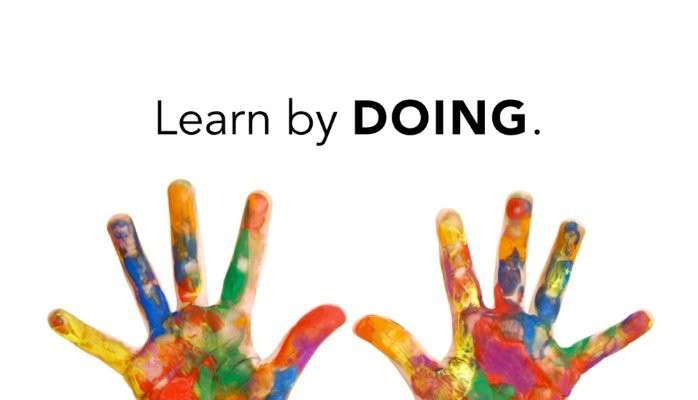
Experiential learning was coined by psychologist and learning theorist, David Kolb in 1984. According to Kolb, knowledge is formed through active participation from the learner and their environment through real-life experiences and through the reflection of those experiences (Kolb, 1984).
What are the characteristics?
Kolb (1984) described the characteristics of experimental learning as…
- Learning is not an outcome: Instead of viewing learning as the meeting of a learning outcome, we should recognize that learning can be formed through development.
- Learning is continuous: As we learn through experience, our knowledge is constantly changing to form new ideas in replacement of old ones.
- Learning involves balancing opposed abilities: Learners must choose which set of learning abilities they will show in a given learning situation (There are four abilities in this case: concrete experience, reflective observation, abstraction conceptualization, and active experimentation).
- Learning involves transactions between the learner and the environment: Learners will obtain knowledge when they are interacting with the activity in a real-life situation.
- Learning is the process of creating knowledge: To understand learning, we must also understand that knowledge is a transaction between social knowledge and personal knowledge.
How can we implement this in classrooms?
- Field trips
- Role-playing
- Reflection activities
- Peer-tutoring
- Student-run class discussions
What are the benefits of this learning?
According to the website, Experiential Learning Depot, experiential learning…
- Links theory to practice
- Promotes creativity in students
- Increases students’ engagement
- Accelerates the speed of learning
- Promotes life-long learning
Experiential learning and growth mindset

Experiential learning aligns seamlessly with a growth mindset because a growth mindset involves the active transaction between the learner and the environment in order to shift their mindset from a stagnant, negative place to a continuous, positive one. Additionally, a characteristic of experiential learning is that it does not view learning as an outcome which is also true of the growth mindset which views learning as a way to grow and develop new skills.
This learning strategy will be utlilized within my Interactive Learning Resource because in order for children to utilize a growth mindset in their own lives, they must engage in real-life practice and scenarios. This will be obtained through activities such as…
- In pairs, students will be provided with a story where a child is met with a challenge. Students will brainstorm ideas of different thoughts and behaviours the child could have in a fixed/growth mindset and how that would change the subsequent behaviour. Pairs will then present their ideas to another group via breakout rooms.
- Students will display their learning in a medium of their choice (write/draw a picture/make a video etc.). Share a time when you were met with a challenge and did not use a growth mindset. Modify the scenario using a growth mindset. What actions were involved and what was the result?
References
Kolb, David. (1984). Experiential Learning: Experience As The Source Of Learning And Development.
Segar, S. (2021, August 31). The benefits of experiential learning. Experiential Learning Depot. https://www.experientiallearningdepot.com/experiential-learning-blog/the-benefits-of-experiential-learning
Excellent overview of experiential learning with its practical application! It is a wonderful idea to ask students to solve a challenge together. It is a good strategy to motivate them to collaborate and construct their personal knowledge. One of the most difficult tasks for teachers is finding a relevant challenge for students, though – the one they really want to solve. By the way, please adjust the date in the settings. For some reason, the date of when the blog was initially posted is incorrect. It seems like a re-occurring issue. Thank you.